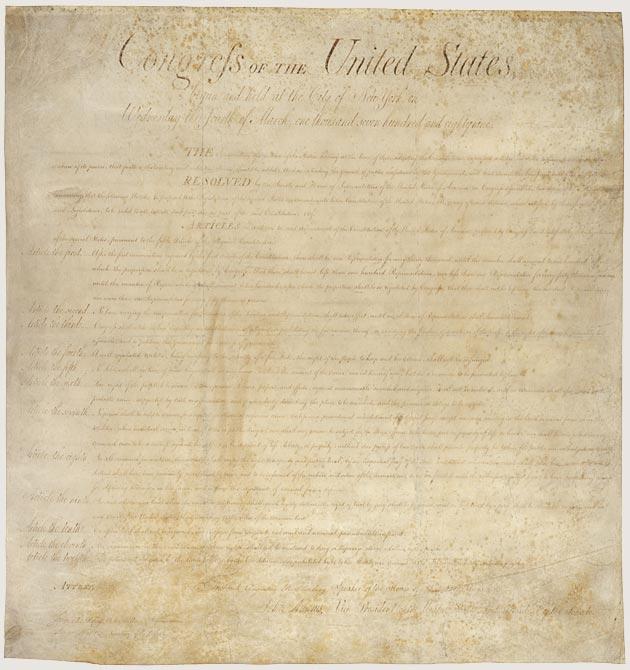Description of the Document

The document we are talking about could be considered fundamental for the appearance and development of the USA. It is the Bill of Rights which includes the first ten amendments to the United States Constitution. The example presented in web archives is the photo of the historical document that was added to the Constitution in 1791 (“The Bill of Rights,” n.d.). In such a way, a visitor could observe its authentic image and improve his/her comprehension of this very document.
Historical Significance
The historical importance of the Bill of Rights could hardly be overestimated. It appeared in times when the future of the USA was unclear, and the way the country would evolve had to be chosen. There were vigorous debates related to the Constitution and rights it would guarantee to all citizens. Being a union of numerous states with their perspectives on the future, the USA had to elaborate a document that would satisfy all parties and contribute to the empowerment of the commonwealth. However, the debates over the ratification of the Constitution were difficult because of numerous fears related to the creation of the powerful state machine and its impact on citizens rights. For this reason, the question about the distribution of power remained topical. The adherers of the Virginia Plan proposed the Bicameral Congress with members elected according to the states population (“The Bill of Rights: Its history and significance,” n.d.).
Their opponents promoted the New Jersey plan which included a unicameral body consisting of an equal number of representatives of all states, no matter how populous they were (“The Bill of Rights: Its history and significance,” n.d.). For this reason, the U.S. Constitution could be considered an attempt to find a compromise and satisfy representatives of all parties. In such a way, the final version of the document suggested the proportional distribution of seats in the House of Representatives, and equal representation in the Senate (“The Bill of Rights: Its history and significance,” n.d.). The given compromise resulted in the ratification of the U.S. Constitution and it is becoming the main law. However, many disappointed people were afraid of the abuse of power and rights impairment because of the increased power of the government. That is why the document that is now known as the Bill of Rights was introduced. It included ten significant amendments to the constitution which provided all citizens with their lawful rights and ensure fair distribution of power. Consequently, Bill helped to make a compromise and reconcile two points of view. Moreover, it promoted the further development of the country and it’s becoming one of the first democratic states in the world.
Current Status
The Bill of Rights remains topical today as it still regulates the mechanisms according to which the state functions and evolves. For instance, by the First Amendment, the freedom of speech and the free exercise of religion is protected by the law and every citizen can appeal to it. These postulates remain crucial for the modern U.S. environment as any law or legislative act is not able to ignore the Amendment. Altogether, the creation and ratification of the Bill of Rights became the turning point in American history as it contributed to the creation of the legal environment in which we live nowadays.
References
The Bill of Rights. (n.d.). Web.
The Bill of Rights: Its history and significance. (n.d.). Web.